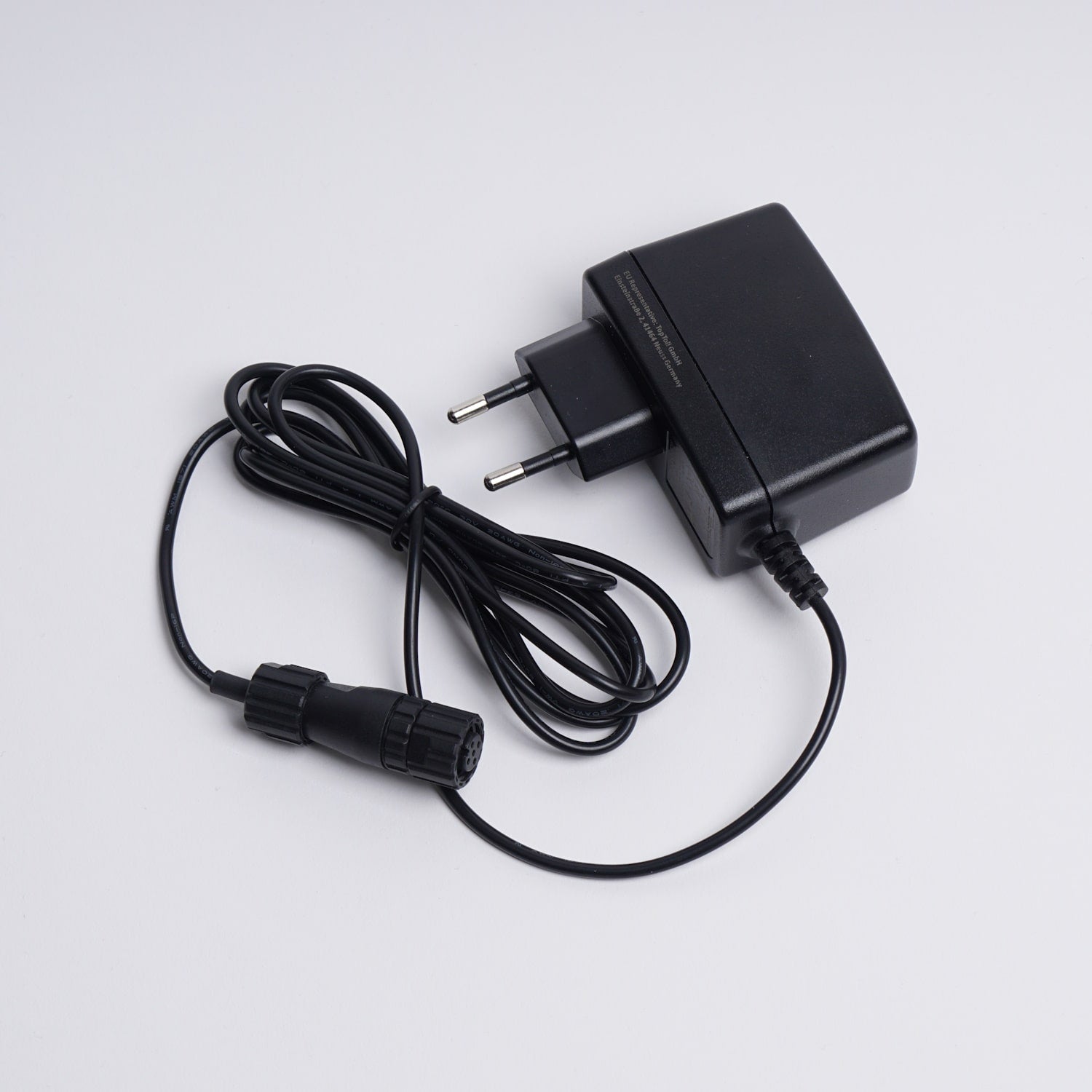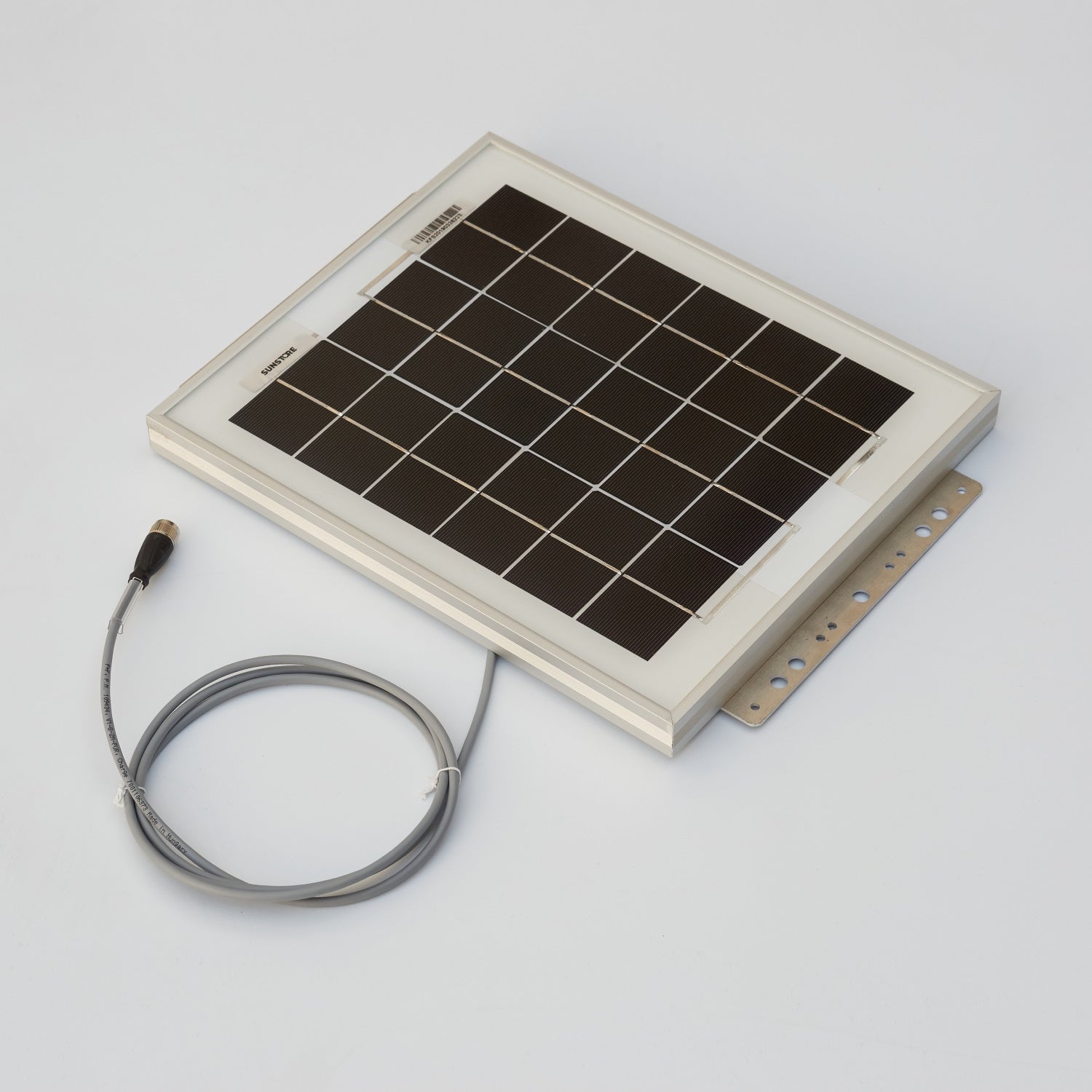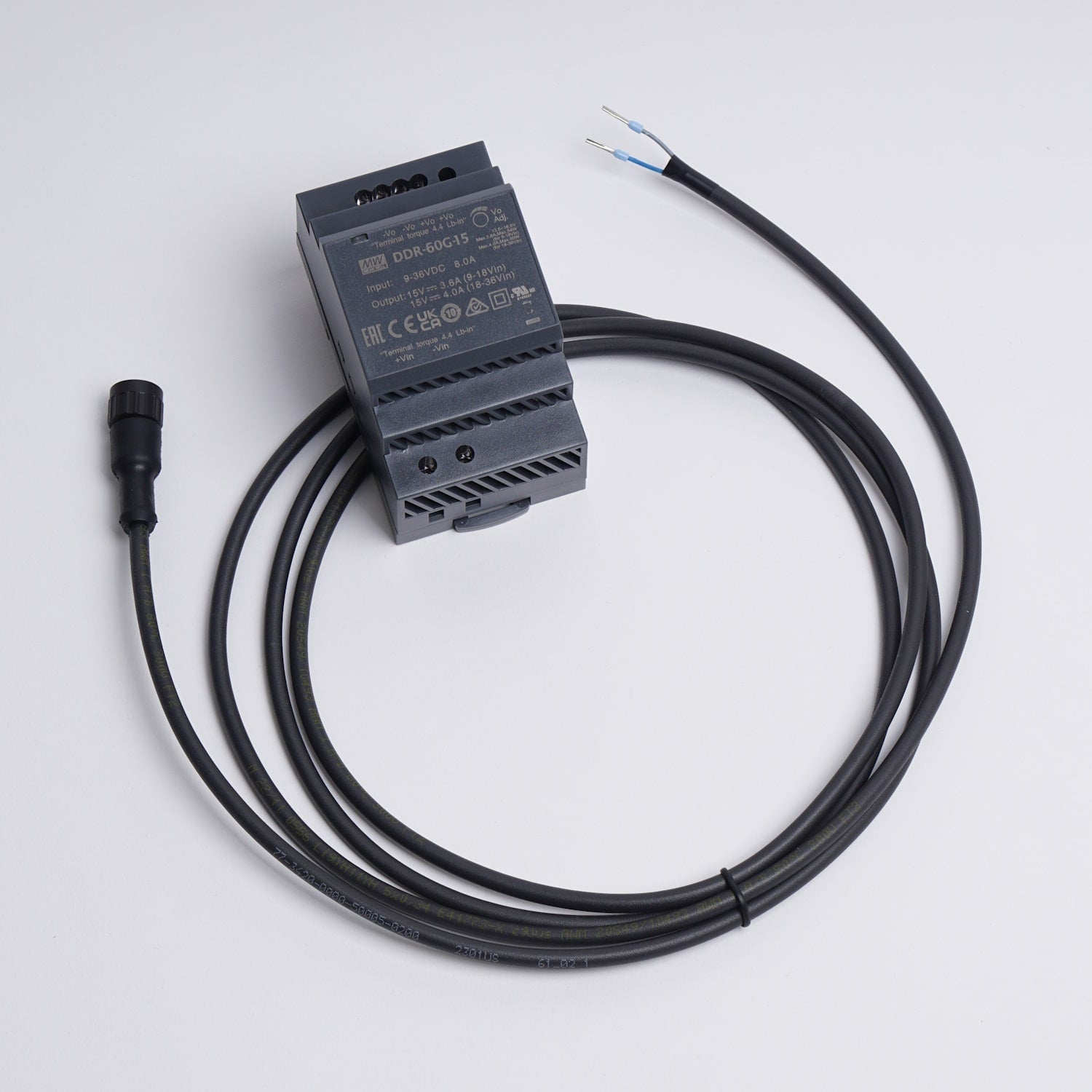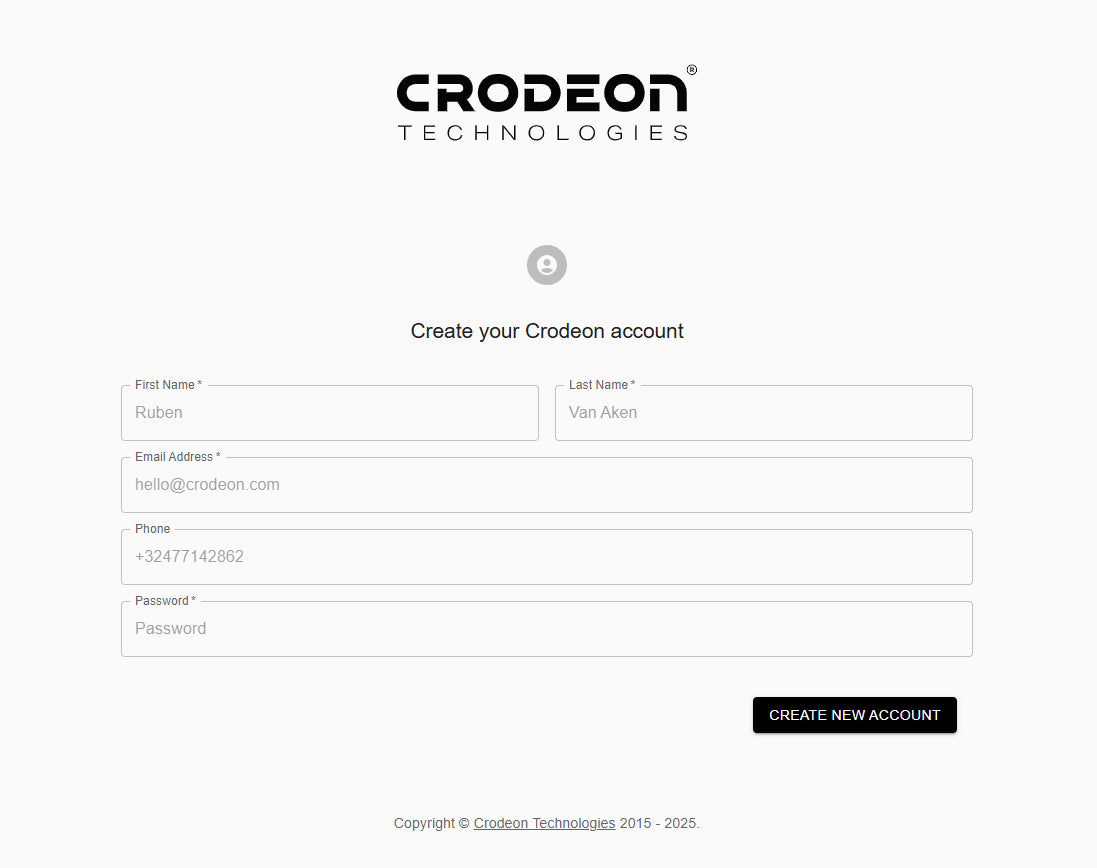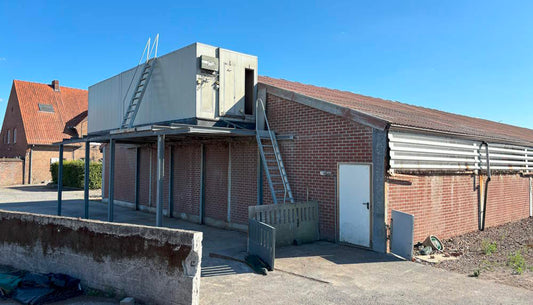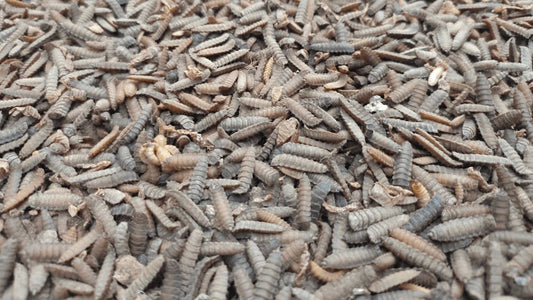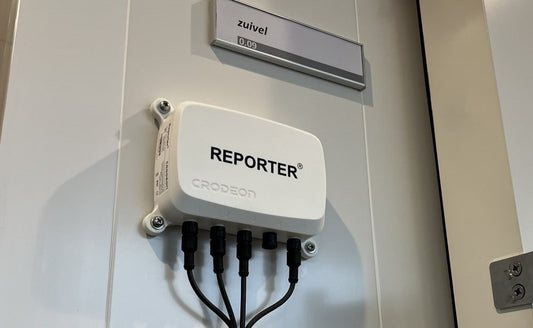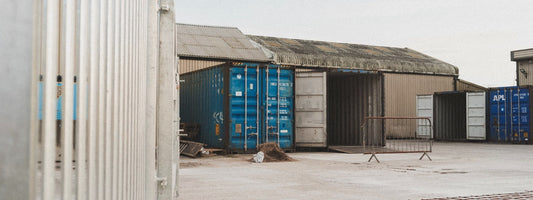Comment Reporter est-il alimenté ?
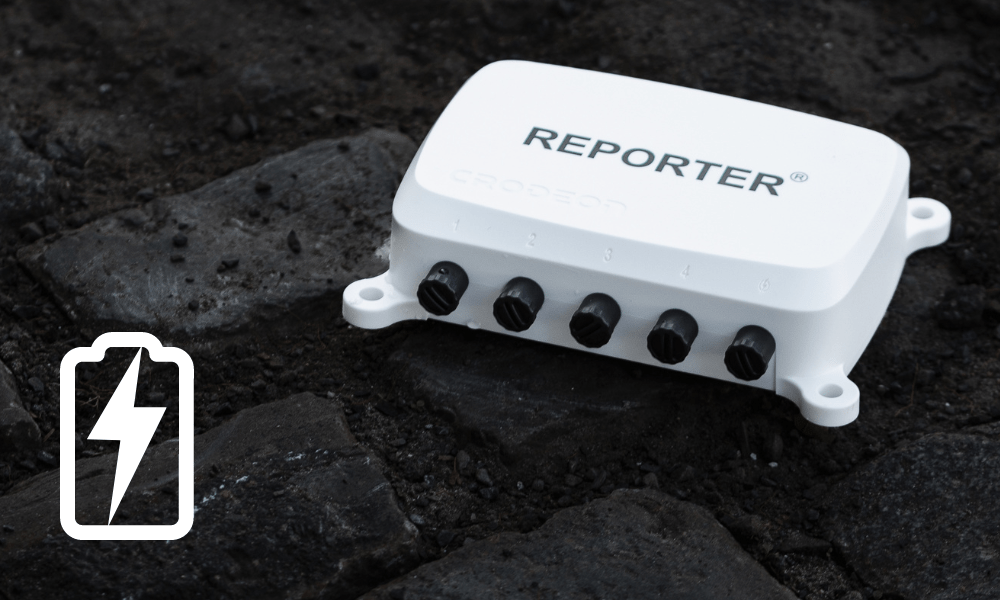
Notre système de surveillance à distance Reporter est à la fois compatible avec le réseau électrique et l’énergie solaire. Chaque Reporter est livré avec une batterie de secours interne de 5 200 mAh. En cas de panne de courant, cette batterie garantit la poursuite des mesures jusqu'à ce que vous ayez le temps de résoudre le problème. Elle permet également au Reporter, alimenté à l'énergie solaire, de continuer à mesurer et à surveiller pendant la nuit.
En fonction de votre emplacement et de votre projet de mesure, vous devez réfléchir à l'option qui vous convient le mieux.
Réseau électrique
Dans les zones plus peuplées, la présence de prises de courant ne fait aucun doute. Si votre projet le permet, la source d’énergie fiable la plus simple est le réseau électrique. En outre, cela vous permet également de surveiller la survenue de coupures de courant.
Quand alimenter votre Reporter à l'aide du réseau électrique
Nous recommandons d'utiliser le réseau électrique dans les situations suivantes :
- Projets d'intérieur
- Projets où vous pouvez brancher le chargeur sur une sorte de prise couverte
- Projets où vous souhaitez surveiller le réseau électrique ou un générateur pour détecter les pannes de courant
- Projets extérieurs où la lumière du jour est insuffisante pour utiliser un panneau solaire
- Projets extérieurs nécessitant des capteurs haute puissance
La fiche du chargeur est IP22, ce qui signifie qu'elle ne peut pas être utilisée à l'extérieur ou dans des environnements humides. Vous ne pourrez pas utiliser cette prise pour charger ou alimenter votre Reporter, même si vous disposez d'une prise IP44 sur votre mur extérieur. Il en va de même pour les mesures sur un chantier de construction ou un site de recherche : vous ne pouvez pas brancher l'adaptateur sur une boîte de distribution « ouverte ».

Alarme de panne de courant
Si votre réseau électrique cesse de fonctionner pour une raison quelconque, Reporter le détectera. Vous pouvez choisir d'activer une alarme de panne de courant afin de recevoir une notification en cas de coupure de courant. Nous vous déconseillons d'utiliser une alarme de panne de courant si vous utilisez l'énergie solaire. La raison est simple : vous recevrez des notifications d’alarme chaque nuit lorsque le soleil se couche.
Énergie solaire
Dans les zones reculées, les prises de courant ne sont souvent pas disponibles. L'utilisation d'un panneau solaire pour charger et alimenter votre Reporter peut résoudre ce problème. Tant qu'il y a suffisamment de lumière du jour, Reporter pourra se recharger. Cette option élargit considérablement la gamme de projets pouvant être suivis et mesurés par Reporter.
Quand utiliser un panneau solaire pour votre Reporter
Nous vous recommandons d'utiliser un panneau solaire dans les situations suivantes :
- Projets extérieurs où aucune prise (couverte) n'est disponible
- Projets extérieurs exposés au risque de foudre
- Projets extérieurs où vous n'avez pas besoin de surveiller le réseau électrique ou un générateur
Lorsqu’on souhaite placer une installation telle qu’une station météorologique au sommet d’une montagne, elle risque d’être frappée par la foudre. Pour éviter que l'énorme charge électrique ne pénètre directement dans votre réseau électrique et dans vos câbles et qu'elle engendre de nombreux dégâts, nous vous recommandons d'utiliser le panneau solaire. Si votre installation est touchée, le risque que d'autres équipements branchés soient endommagés est moindre.

Avant d'aller sur le terrain
Avant de placer votre Reporter à l'extérieur avec son panneau solaire, nous vous recommandons de charger complètement la batterie interne en utilisant le réseau électrique. Chaque Reporter est livré avec un chargeur standard qui vous permet de le faire. Sur le Crodeon Dashboard, vous pourrez voir l'état de la batterie de votre Reporter.
Si vous oubliez de le faire, Reporter peut avoir besoin de plus de temps avant que l'appareil puisse démarrer complètement et commencer à mesurer. Mieux vaut donc y penser !
Chargeur sur rail DIN
Parfois, ni le réseau électrique ni les panneaux solaires ne sont compatibles avec votre projet de surveillance à distance. Dans de tels cas, une alimentation sur rail DIN peut être la solution à votre problème. Ce module d'alimentation convertit 9-36 V CC en 15 V, ce qui est parfait pour alimenter votre capteur Reporter.
Le module de charge est livré avec une extrémité ouverte de 2 m vers un câble M12 pour se connecter facilement au port de charge de votre Reporter.
Batterie interne
Lorsque le Reporter est connecté au réseau électrique ou à son propre panneau solaire, la batterie interne Lithium-Ion est chargée. Cela signifie également que lorsque l'électricité est coupée en raison d'une panne, de l'absence de soleil ou simplement d'un débranchement, Reporter dispose toujours d'une alimentation de secours. Reporter est équipé d'une batterie lithium-ion de 3,6 V et 5 200 mAh .
Cette batterie interne peut alimenter Reporter pendant au moins une semaine. Nous vous recommandons cependant de connecter l'appareil à une source d'alimentation fiable pour votre tranquillité d'esprit.
Alarme de batterie faible
Reporter est livré avec une alarme de batterie faible intégrée. Cela signifie que chaque fois que l'appareil risque de s'éteindre en raison d'une batterie presque vide, il vous enverra une notification d'alarme.
Tension
Reporter fonctionne à basse tension, ce qui signifie qu'il a toujours besoin d'un chargeur pour fonctionner lorsqu'il est connecté au réseau électrique 230 V. Il est extrêmement important d'utiliser le bon chargeur avec votre Reporter, car une mauvaise tension pourrait griller votre appareil. Nous incluons toujours un chargeur compatible avec chaque Reporter et vous recommandons de n'utiliser que celui-ci. En appliquant directement 230 V du réseau électrique au connecteur M12, le Reporter tombera en panne.
La différence entre deux générations de Reporter
Fin 2022, nous avons lancé une nouvelle génération de Reporter. Dans l'image ci-dessous, vous pouvez voir le nouveau modèle (à gauche) et l'ancien modèle (à droite). Les capteurs et chargeurs ne sont pas interchangeables entre ces deux systèmes. Ils sont technologiquement incompatibles.

Si vous êtes l'heureux propriétaire de différentes générations de Reporter, il est important de ne jamais mélanger les anciens et les nouveaux chargeurs électriques et panneaux solaires. Les deux systèmes fonctionnent avec des tensions différentes et des directions différentes dans lesquelles l'électricité se déplace.
-
Lorsque vous connectez un ancien chargeur électrique ou un vieux panneau solaire à votre nouveau Reporter, vous endommagerez votre Reporter.
-
Lorsque vous connectez un nouveau chargeur ou un nouveau panneau solaire à l'ancien Reporter, cela ne fonctionnera tout simplement pas et le système ne se chargera pas. Vous n’endommagerez pas votre Reporter.
Si vous possédez les deux systèmes et que vous avez des questions sur la compatibilité, n'hésite pas à nous contacter.
Comment distinguer les deux modèles de chargeurs et de panneaux solaires
|
Nouveau Reporter
|
Ancien Reporter
|
|
|---|---|---|
| Nombre de trous de broches connectés dans le connecteur femelle M12 | 5 (4 trous extérieurs + le trou du milieu) | 4 (4 trous extérieurs) |
| Prise de chargeur | Sortie 18 V | Sortie 12 V |
| Panneau solaire | Sortie 18,2 V (Vmp) | Sortie 9,25 V (Vmp) |
Le nouveau Reporter a une entrée maximale de 20 V, tandis que l'ancien Reporter a une entrée maximale de 12 V.
Questions fréquemment posées sur Reporter et l'alimentation
Comment Reporter est-il alimenté ?
Reporter peut être alimenté par le réseau électrique ou un panneau solaire compatible.
Quelle est la taille de la batterie du Reporter ?
La dernière version de Reporter est équipée d'une batterie lithium-ion 3,6 V 5 200 mAh.
Combien de temps Reporter peut-il tenir sans électricité ?
Lorsqu'elle est complètement chargée, la batterie permet au Reporter de tenir encore une semaine après avoir perdu sa charge.
Quelle tension le Reporter utilise-t-il ?
Le modèle le plus récent de Reporter utilise environ 18-20 V.
Reporter a-t-il besoin d’un chargeur ?
Oui, Reporter n’est pas directement compatible avec le 230V et nécessite toujours un chargeur.
Quel panneau solaire Reporter utilise-t-il ?
Reporter est compatible avec son propre panneau solaire. Ce panneau petit mais costaud permet au Reporter d'être entièrement alimenté par l'énergie solaire.
Comment acheter un chargeur pour Reporter ?
Dans la boutique en ligne Crodeon, nous vendons des chargeurs compatibles avec nos appareils. Vous pouvez trouver le chargeur secteur. N'hésitez pas à nous contacter si vous avez besoin de conseils.
Comment acheter un panneau solaire pour Reporter ?
Dans la boutique en ligne Crodeon, nous vendons des panneaux solaires compatibles avec nos appareils. Vous pouvez trouver le panneau solaire ici. Contactez-nous si vous avez besoin de conseils.
Les différentes générations de Reporter utilisent-elles des chargeurs et des panneaux solaires différents ?
Oui, les différentes générations de Reporter utilisent des tensions différentes et les broches du connecteur M12 sont disposées différemment. Les chargeurs et les panneaux solaires des systèmes ne sont donc pas interchangeables.

